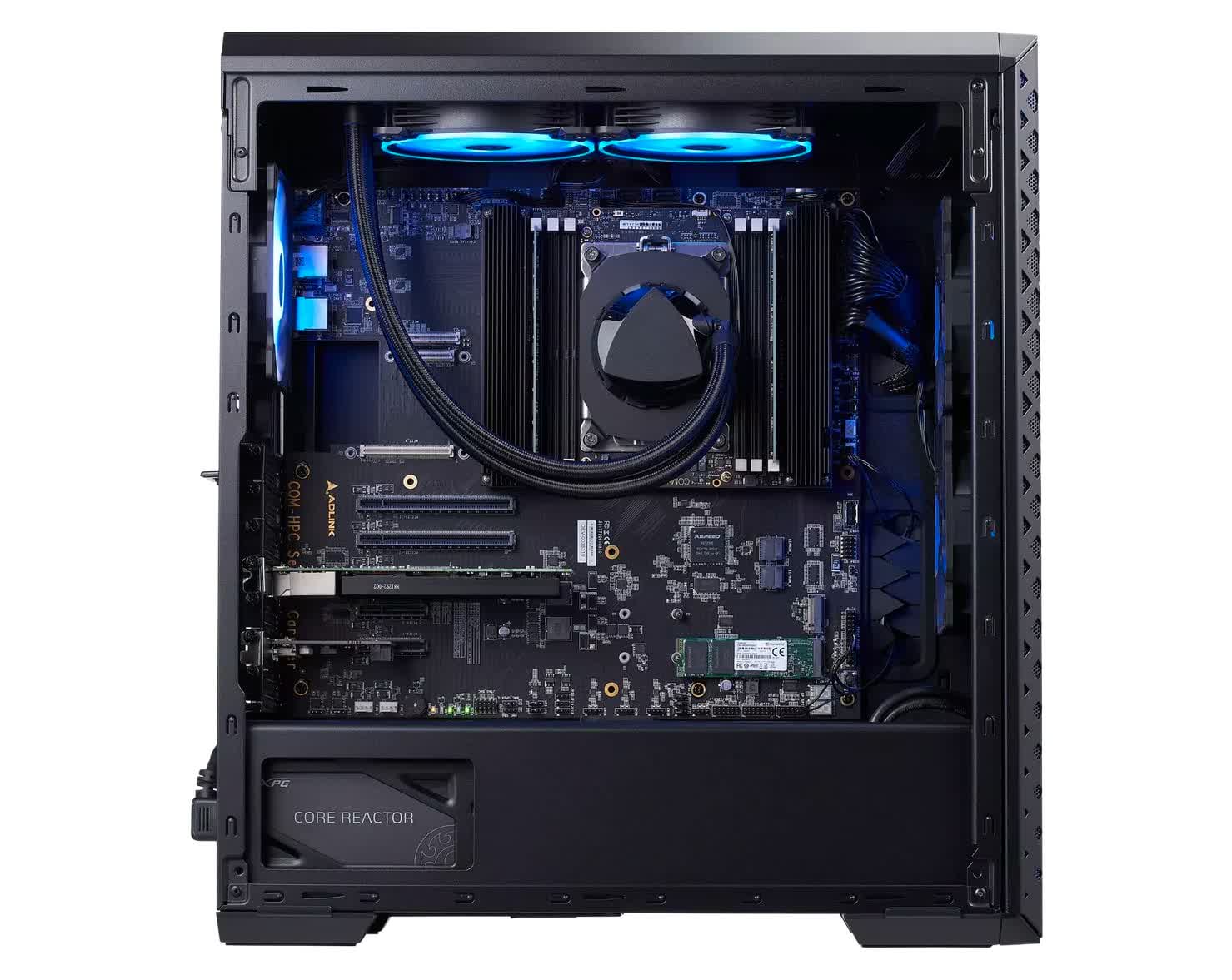In brief: You can now buy an 80-core Arm dev kit that can run Windows normally for the cost of a conventional high-end system. You'd only want it if you were prototyping hardware or software for edge computing, but imagine what you could do with it in your downtime.
Ampere launched the Altra Dev Kit this week, a stripped-down system that comes in a cardboard box. It includes a featureful motherboard, an SoC glued to a daughterboard, a trio of heatsinks, and an all-important VGA to HDMI cable. It starts at $2,003 for the 32-core kit and reaches up to $2,621 for the 80-core kit. Ampere also makes a 128-core SoC but it's out of stock at the moment.
Ampere makes four different SoCs based on the Arm Neoverse N1 architecture for data centers. The 32-core model clocks in at 1.7 GHz and the 64-core model steps up to 2.2 GHz. Both the 80-core and 128-core models clock up to 2.6 GHz. All four models have 64 PCIe 4.0 lanes and support up to 768 GB of DDR4 ECC memory split across six channels.
Ampere and its parent company IPI (Industrial Prototyping for IoT) only sell systems to consumers for development and testing purposes. Ampere's other main product is the Altra Developer Platform (above), a prebuilt tower.
It looks like a stock standard gaming PC with a tempered glass panel on one side and five RGB fans and a 240 mm AIO inside. You'd be forgiven for mistaking it for a midrange machine if you saw the unbranded 128 GB M.2 stick and the two green DDR4 sticks in mismatched slots, but it's not cheap.
It starts at $3,250 for the version with 32 cores and 32 GB of RAM and can be configured up to 128 cores and 128 GB of RAM for $5,658.
Ampere Altra Dev Kit supports @nvidia RTX GPUs pic.twitter.com/O28FogV7hB
--- Joe Speed (@JoeSpeeds) April 7, 2023
Ampere is one of the few brands that advertises its data center SoCs as having support for Windows and consumer Nvidia RTX GPUs out of the box.
The Developer Platform comes with an unspecified discrete GPU as standard but can be upgraded with an RTX GPU later down the line, as Ampere's edge computing head Joe Speed demonstrated on Twitter. I'd love nothing more than to see an RTX 4090 thrown in there to find out if the Arm chips can handle AAA games. Nvidia already uses them to stream mobile games in China in conjunction with its A16 GPUs.

